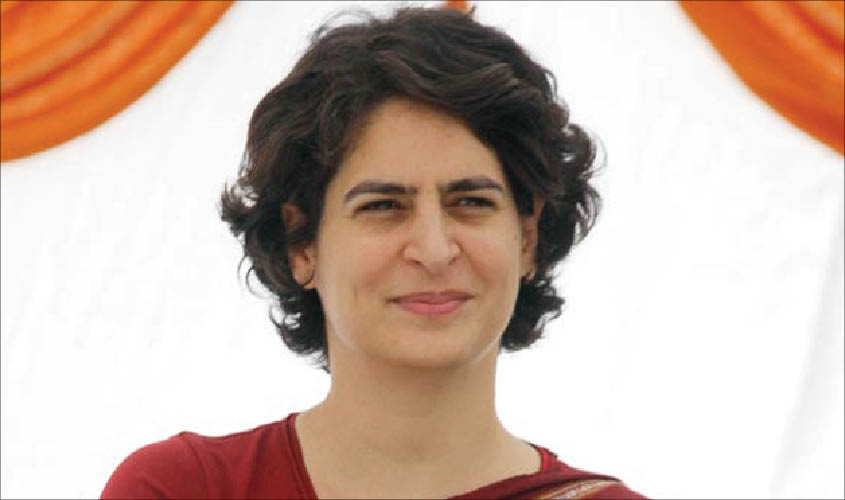As the Indian National Congress looks for a successor to Rahul Gandhi, it may be worthwhile to recall the circumstances under which Sonia Gandhi was anointed as the party chief on 14 March 1998. Following Rajiv Gandhi’s tragic assassination in May 1991, the Congress Working Committee had unanimously requested his widow to take charge. Those who vouched for the succession had before them the precedent of an Englishwoman, Nellie Sengupta, who was elected Congress president in 1933 when her husband, Jatindra Mohan Sengupta, slated to become the party chief the AICC in Calcutta, died and the party turned to his widow, who was his partner in the freedom struggle, to take the mantle. She succeeded Madan Mohan Malviya—Rajendra Prasad succeeded her in 1934.
Unlike Sengupta, Sonia Gandhi had not been active in politics with Rajiv Gandhi (she, in fact, had vehemently opposed Rajiv Gandhi’s entry into the party post Sanjay Gandhi’s death). Her refusal led to the emergence of P.V. Narasimha Rao as the Congress president and when Congress emerged as the largest party he went on to become the Prime Minister. Sonia proponents—Arjun Singh, Makhan Lal Fotedar, Shiela Dixit, K. Natwar Singh, Narayan Dutt Tiwari et al, however, did not feel comfortable with the “pariwar mukt” dispensation. With unobtrusive support of 10 Janpath, Congress (Tiwari) was launched on the eve of the 1996 Lok Sabha elections. This party, along with the Madhya Pradesh Vikas Congress floated by late Madhavrao Scindia, reduced the chances of the party led by P.V.Narasimha Rao, which had given a successful Congress government despite being in minority in the Lok Sabha between 1991-96. An era of unstable coalitions was ushered in, with Devegowda, Inder Gujaral and a 13-day Atal Bihari Vajpayee regime being sworn in.
After the defeat of Narasimha Rao, the Congress (Tiwari) and Madhavrao Scindia outfits remerged into Congress and thus began the beginning of the journey back to family-controlled organisation. Rahul Gandhi’s desire that a president be elected from outside his family thus tends to turn the clock back after 23 years—the years marked by the steady decline in the fortunes of India’s party of Freedom. After the 1996 defeat, Congress elected Sitaram Kesari as its chief. During Kesari’s tenure, Sonia Gandhi announced that she will campaign for the party. She went to the December 1997 session of AICC in Calcutta (that’s how the city was known then) and formally joined Congress. The session was marred by a dharna by Mamata Banerjee, who, with the covert support of Sonia Gandhi, had been running a parallel Congress organisation in West Bengal between 1991-97. She launched Trinamool Congress in January 1998 (Mani Shankar Aiyar was one of the founder members—the “family” endorsement thus was rather apparent). On 14 March 1998, Sitaram Kesari, it is said, was locked up by goons in a toilet of the AICC headquarters, 24 Akbar Road, and Sonia Gandhi triumphantly walked into a CWC meeting among cheerful sloganeering and took over the reins of the party—she reigned till 2017 when Rahul Gandhi was anointed. (Addressing an election rally in Chhatisgarh’s Mahasamund this year, Narendra Modi referred to this episode and said that Kesari, an OBC, was thus humiliated by Congress—it was rebutted by a Congress spokesman, who said Kesari was not an OBC but a Bania, he also denied the incident, which incidentally had set New Delhi’s grapevine abuzz in March 1998.)
Sonia Gandhi’s elevation was challenged by the trio of Sharad Pawar, Tariq Anwar and Purno Agitok Sangma in May 1999. They were expelled. Nationalist Congress Party (NCP) emerged with Sharad Pawar as the leader. Five months later, in October 1999, both Congress and the NCP turned turtle and formed a coalition government in Maharashtra. Vilasrao Deshmukh of Congress was made the chief minister and all important portfolios went to the NCP. Observers say the death-knell of Congress in Maharashtra was sounded by this alliance. Had Congress chosen to sit in the opposition, thus forcing the NCP to share power with the BJP and Shiv Sena, it could have triggered an exodus of cadres from NCP to Congress—now Congress cadres have found refuge in NCP, Shiv Sena and senior Congressmen have joined BJP. The first decision of Sonia Gandhi as party chief in 1999 has left its long shadow over the past two decades. Apart from Maharashtra, the Congress organisation suffered in the erstwhile undivided state of Andhra Pradesh, which had been Indira Gandhi’s bulwark of support in her darkest hour in 1977. So much so that in 1980 she chose to retain the Medak seat despite having regained Rae Bareli. The bifurcation of AP and covert support to Jaganmohan Reddy have resulted in Congress being turned into a cipher—the residual Telangana unit has gravitated towards the BJP. Thus in four major states—West Bengal, Maharastra, Telangana and residual Andhra Pradesh—the decisions of the Sonia Gandhi era have not yielded bounty for the Congress.
Congress in the past two decades has been run by an apolitical leadership. The qualifications of Dr Manmohan Singh notwithstanding, he had no roots in the Congress movement. Even now, when he has finished his Rajya Sabha term from Assam (as he never could win from Punjab) a safe seat to bring him back to Rajya Sabha is being contemplated—the DMK has refused in Tamil Nadu, the vacancy from Rajasthan is being now talked about. His presence in Parliament enhances its eminence—but does it impact Congress’ organisational or electoral prospects? Ditto for most Rajya Sabha faces of the party. While Rahul Gandhi’s resignation has triggered a chain of quit notices, it has not induced the nascent General Secretary Priyanka Vadra to offer to quit. As Congress looks for a “non-family” successor to Rahul Gandhi, will it be able to find someone who will not be affected by Priyanka Vadra’s umbra? Her son, Rehan, has been named Rehan Rajeev Vadra—he was seen in her roadshows during the poll campaign. Is “parivar-mukt” Congress a possibility?

